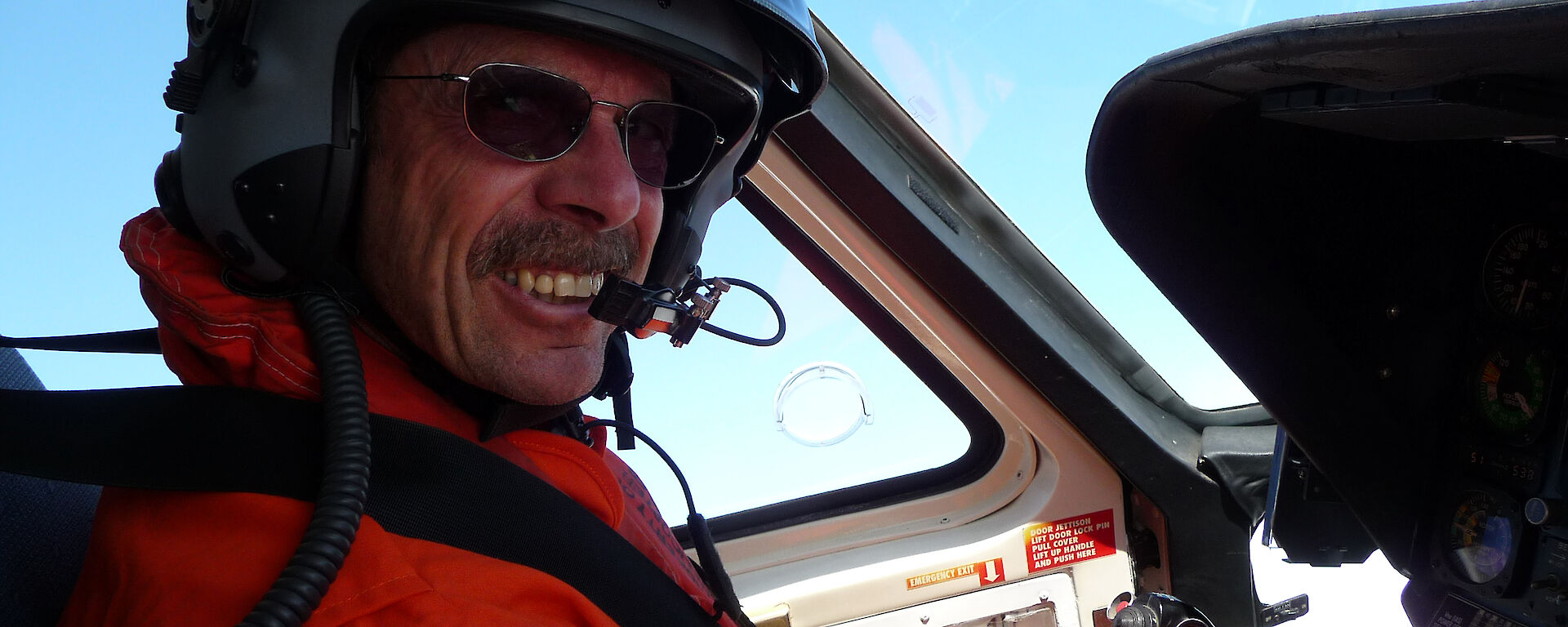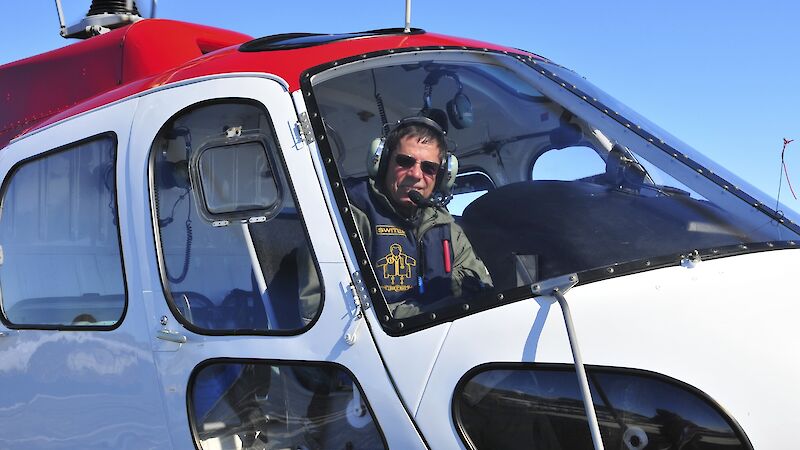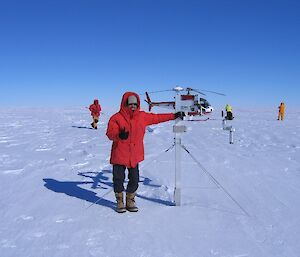Flying over large expanses of ice, water and weather-making mountains, in an unlikely collaboration of nuts, bolts and rotors, is not everyone’s idea of a good time. But it’s made an enviable living for helicopter pilot David Pullinger.
For 40 years David has travelled to some of the most beautiful places in the world, mucked in with scientists in the field, helped rescue lost or injured bushwalkers and mariners, water-bombed fire fronts, and saved precious fruit from frost. His work in Antarctica, however, as a pilot for the Tasmanian-based company Helicopter Resources, has provided some of his most memorable, satisfying and exhilarating experiences. This year, his 20 years of service to the Australian Antarctic program was rewarded with an Antarctic Medal.
'I was really thrilled and surprised when I received the letter from Government House; my family were very excited,' David says of his award.
'It’s an honour and a humbling experience. It’s recognition for me, and for the pilots and engineers of Helicopter Resources who contribute to making these expeditions a success. This medal also recognises my wife Mona, who has always been so supportive and enthusiastic of my frequent trips south and who looked after our two young sons, Mark and Lars, when I was away.'
David’s flight path to Antarctica followed 20 years of working in Canada, Iran and Nigeria, supporting work in mineral exploration and on oil rigs. After emigrating from England to Australia in 1979, he flew geologists around the Northern Territory and Western Australia, and worked for the Department of Aboriginal and Islander Affairs on Thursday Island. When a position in Tasmania opened up, he jumped at the chance.
'Helicopter Resources had the Antarctic contract when I joined, and I got my first trip south in 1987,' David says.
After a ‘lively’ trip on the icebreaker, Icebird, with a group of other young 'first timers', David got his first glimpse of Mawson's Rumdoodle mountain range.
'I was over-awed by the sheer magnitude of the place; being surrounded by a cold, icy world with the imposing peaks of Rumdoodle rising above the plateau,' he says.
So began a long career supporting the Australian Antarctic program and including stints with the German and Japanese programs. While flying equipment and people between ships, stations and the field is his primary role, David and the other helicopter pilots and engineers spend a lot of time assisting with scientific field work.'Working in the field is probably the most enjoyable part of the job for me. We've helped out a lot on the Amery Ice Shelf project in the Lambert Glacier Basin [which aims to understand the climatic history of the region and its response to global warming], installing GPS stations and doing other jobs that help the scientists achieve their goals — it’s a great buzz for me,' he says.
Communication and planning are also a huge part of his work.
'Flying is exhilarating and at times challenging. Safety is the bottom line, and talking tasks through with meteorologists, the station leader and scientists is so important. If you have good weather then most tasks are achievable. But there’s a big mix of personalities, so you have to be a team player, and you have to be flexible. Things change so quickly. There could be a failure in a critical piece of scientific equipment, for example, and we'll need to work with the scientists to make sure a project can continue, rather than be cancelled.'
An average day sees the helicopter pilots up at 6am to check the weather. At the 8am air operations briefing the pilots meet with the scientists, station leader, aircraft ground support officers and meteorologists to review the tasks and achievability. If everything looks okay it’s time to check the helicopters, refuel and depart. After anywhere up to nine hours of flying, the pilots return to station, shut down, secure the helicopters, do the paperwork, eat and go to bed.
Helicopter pilots always fly in company with a minimum of two aircraft for safety, and there is always a senior pilot, like David, to assist those with less Antarctic experience.
'We do a lot of landings on snow and ice and you need to be able to read it — its colour and thickness. Whiteout is the biggest threat and one to be avoided without compromise. This comes with experience. You also need to be able to understand and read the weather, and we work closely with meteorologists.'
In all his years David has experienced only a few heart-in-the-mouth moments, with engine failures, which pilots are trained to deal with. He also rates the 'mechanical' turbulence generated by Heard Island's volcano, Big Ben, as memorable, as was the night a bear ransacked the kitchen tent when he was camped in the Canadian wilderness.The 2009 summer season will be one of the few times in 20 years that David won’t be heading to Antarctica. While he will miss going south, there will be plenty of other work to keep him busy. Transporting equipment, supplies and personnel to lighthouses around Tasmania is one ‘perk’ of the job, which allows him to indulge his other passions.
'I fly maintenance crews into lighthouses, which are often in beautiful parts of the world, like Flinders Island and Maatsuyker Island,' he says.
'There’s not a lot I can help with on these occasions, so I usually go for long walks and take photos.'
He expects another busy season of fire reconnaissance, mapping and water bombing, and work for the Tasmanian Parks and Wildlife service transporting personnel and supplies for track work.
Perhaps one of his more unusual winter-time jobs is frost control for apricot and cherry farmers.
'The farmer will call us up if a frost is forecast and we'll sit on site until the temperature drops — usually about 2am. We'll then hover over the crop to stir up the air and keep the temperature right.'
While David says he plans to enjoy ‘a few years of retirement', he hopes to keep flying for as long as he is certified medically fit. His passion for his work is unwavering.
'You never get bored with helicopters,' he says; ‘they keep you on your toes'.
WENDY PYPER
Corporate Communications, AAD




